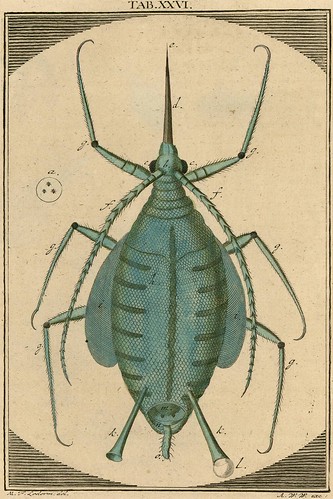





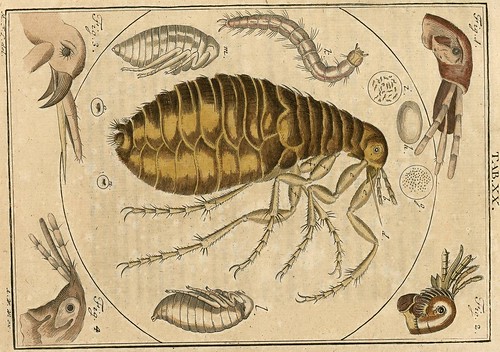

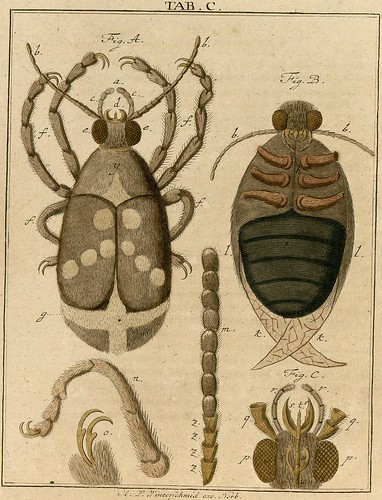
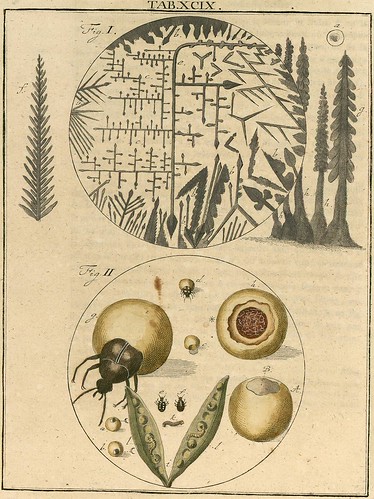
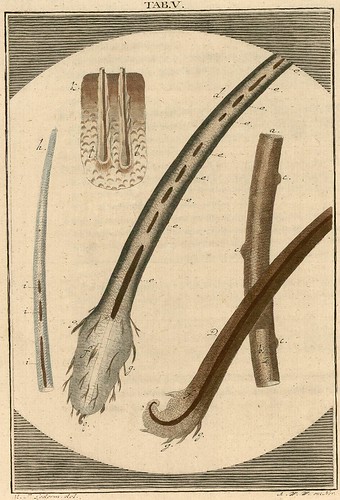
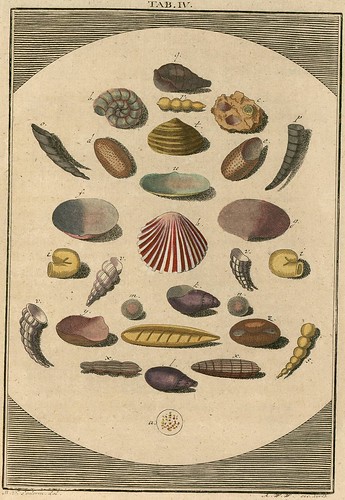
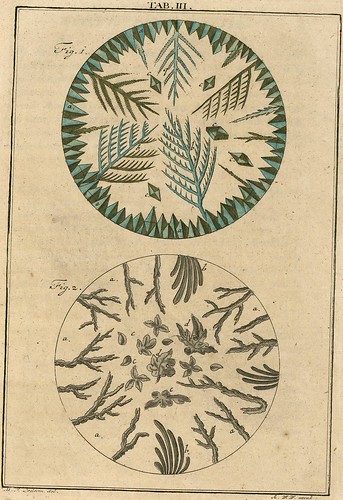

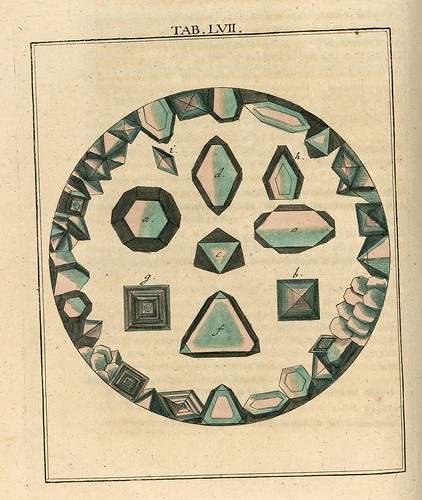
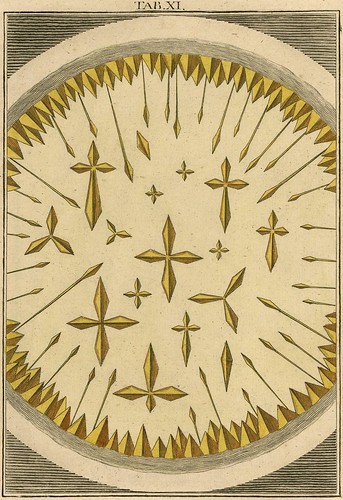




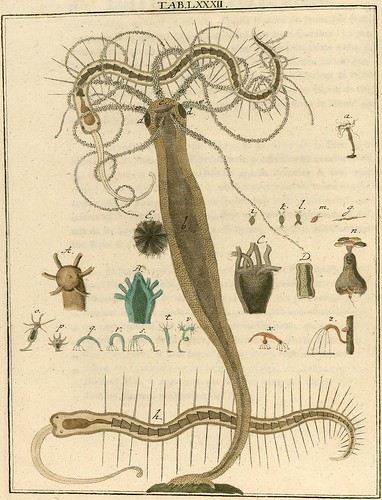
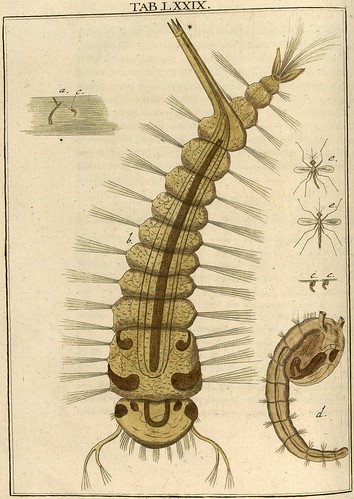
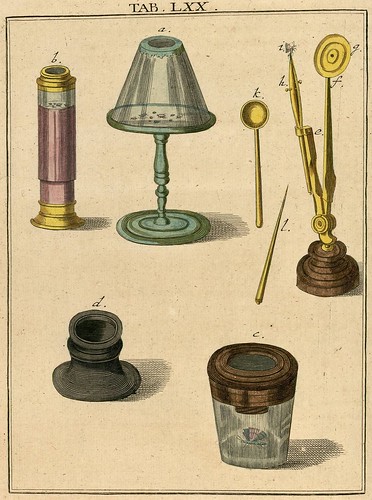
.jpg)


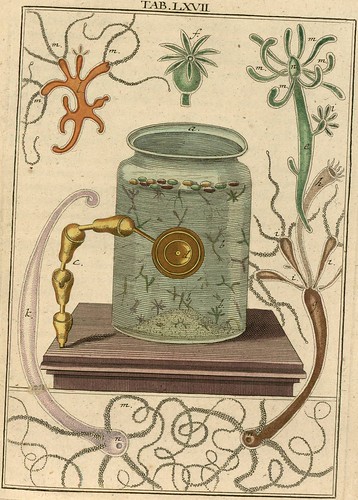


A century after Robert Hooke's extraordinary treatise introduced the microscopic world to an astonished public, the German polymath, physician and keeper of the Margrave of Brandenburg's natural history collection, Martin Frobenius Ledermüller (1719-1769), succeeded in elaborating the potential of this emerging scientific art of popular microscopy.
Ledermüller produced a series of books in the second half of the eighteenth century whose success was directly related to the visual quality of the engravings made from his own drawings. Illustrations of previously invisible material - fungi, plants, insects, plankton and crystals - were a great commercial draw card in their own right of course. But Ledermüller augmented the basic findings he recorded from his microscopic studies with a graphic designer's aesthetic.
Specimens are arranged in the pictures to achieve an overall symmetry or balanced appearance, the details are unnaturally precise and handcolouring enhances the artistic effects. These attractive plates may not win any art show prizes necessarily and the scientific content may not represent ground breaking research per se, but Ledermüller (and similar early microscopists) occupies a nonetheless important place in the history of science. These embellished visual works - still informative and based in fact - served as a means by which the esoteric world of science could be communicated to a fascinated lay audience. If enthusiastic dilettantes failed to successfully visualise similar quality details after dashing out to purchase their own microscope, well, it could only be a matter of practice and modifying their techniques right?
Within the last two days, the formidable Strasbourg Universities Digital Library uploaded a three volume work by Ledermüller. The selection of images above is from the first two volumes (I've only just now discovered that the third is also on line). About a quarter(?) of the available plates from the first two volumes are shown. I think there are one hundred and fifty plates in total in the series. The only adjustments I made were cropping and a slight reduction in size (the large versions posted to flickr are still huge).
'Amusement Microscopique tant pour l'Esprit, que pour les Yeux; Contenant Cinquante Estampes [..] Dessinées d'après Nature et Enluminées, avec leurs Explications' was published between 1766 and 1768 with engravings by Adam Wolfgang Winterschmidt.
[Approximately: 'Recreational Microscopy for the Spirit and the Eyes, Containing Fifty Coloured Drawings from Nature with Explanations' - this is the title from Volume One]
⊕Volume One (note: after clicking 'See digitalized document', click the little folder icon top left to get thumbnail pages)
⊕Volume Two
⊕Volume Three
⊕Previously
No comments:
Post a Comment